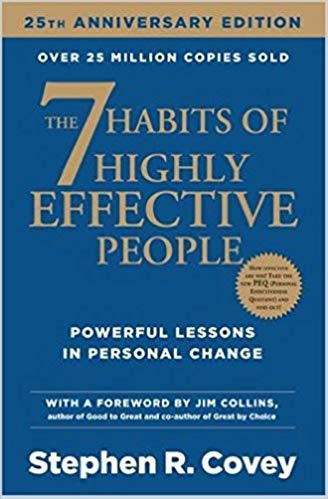

This article is an excerpt from the Shortform summary of "The 7 Habits of Highly Effective People" by Stephen Covey. Shortform has the world's best summaries of books you should be reading.
Like this article? Sign up for a free trial here .
Each side of the brain is responsible for different functions: The right side of the brain is creative, abstract. The left side of the brain deals with logic and language. You need to be both creative and logical as you take a holistic approach to growth and change.
This is where Affirmation and Visualization come in. Affirmation and Visualization are part of a system that works together to help you achieve your goals. Affirmations are written or verbal reminders that you create to help you remember your goals, and Visualizations can help you use both sides of your brain to create and follow through on your goals.
How Do You Use Affirmation and Visualization?
We all use both sides of our brains, but each person tends to feel more comfortable using one side or the other and use that side more heavily. For example, you may know people who feel very comfortable tackling logic- and pattern-oriented challenges, but who shy away from artistic endeavors, insisting they aren’t creative. Additionally, our society tends to emphasize left-brained skills; schools weigh test scores more heavily than creativity, and many industries value logical, well-spoken people above artists and dreamers. But both Affirmation and Visualization are important, and some of the most successful people use both.
The right brain is critical for being proactive and creating paradigm shifts because it encompasses the imagination and creativity you need to dream up how you want your life to be, and what you can do to get there. You need your left brain to then crystallize that image and desire into a personal mission statement. In other words: Affirmation and Visualization help you see your goals, and then plan how to reach them.
Extreme circumstances — including life-changing challenges and the death of a loved one — may force you to expand your left-brained perspective on life and push you into using your right brain. However, a proactive person can also do this at will through Affirmation and Visualization, and learn how to visualize and how to write affirmations.
What are Visualizations?
Visualization entails imagining yourself in a situation that puts life in a larger perspective; maybe you visualize yourself at your own funeral, at your 50th wedding anniversary, or at your retirement party. Imagine what people might say to sum up your life or marriage or career. What would you want them to say? Visualizing these scenarios helps crystallize your principles and values. Affirmation and Visualization depends on being able to have a visual of achieve your goal, and deciding how to get there.
If you’re trying to improve a specific skill, habit, or area of your life, visualize a scenario that causes you to have the reaction that you’re trying to change. For example, if you’re trying to improve your interactions with your kids, visualize a situation in which they do something that would normally anger you. Instead of allowing your normal response to kick in — even in this imaginary scenario — visualize yourself practicing the patience and understanding that you want to embody in the future.
Visualization works best if you visualize in great detail — down to the smell of the room, the texture of the clothes you’re wearing, the feeling of that experience. Dedicate a few minutes each day to practicing this visualization. Separate yourself from distractions and allow your mind and body to totally relax while you do this. This is crucial to the Affirmation and Visualization process.
High-performing people, from professional athletes to NASA astronauts, use visualization techniques to prepare them for critical moments, whether it’s the fourth quarter in a tie game or the space shuttle launch. Visualizing a situation in vivid detail and imagining yourself navigating it exactly the way you want to makes you more comfortable with that situation when it happens in reality. If everything is created twice, visualization is the first creation. Learning how to write an affirmation can then serve as a reminder to work on these goals, and many successful people use Affirmation and Visualization together in an effective way.
What are Affirmations?
Similarly, Affirmations are written or verbal reminders that you create to help you remember your goals. Just as a mission statement helps you to keep your focus on your goals and values, Affirmations work the same way on a smaller scale, applying to one specific behavior or area of your life.
So, are you wondering how to write an affirmation? An effective affirmation has five key components:
- It’s personal. It focuses on you.
- It’s positive. It frames things in a positive light, focusing on something you want to create, not what you want to avoid.
- It’s visual. It lays out a specific situation when the affirmation is applicable.
- It’s in the present tense.
- It’s emotional. It specifies how you feel when you take this action.
Affirmation and Visualization is a key skill that you can do daily to reinforce your larger self-improvement goals and efforts in your life.
———End of Preview———

Like what you just read? Read the rest of the world's best summary of "The 7 Habits of Highly Effective People" at Shortform . Learn the book's critical concepts in 20 minutes or less .
Here's what you'll find in our full The 7 Habits of Highly Effective People summary :
- How to prioritize the hundred tasks you have to focus on the one or two that really matter
- The right way to resolve every disagreement and argument
- How to avoid burning out and succeed over 20+ years






